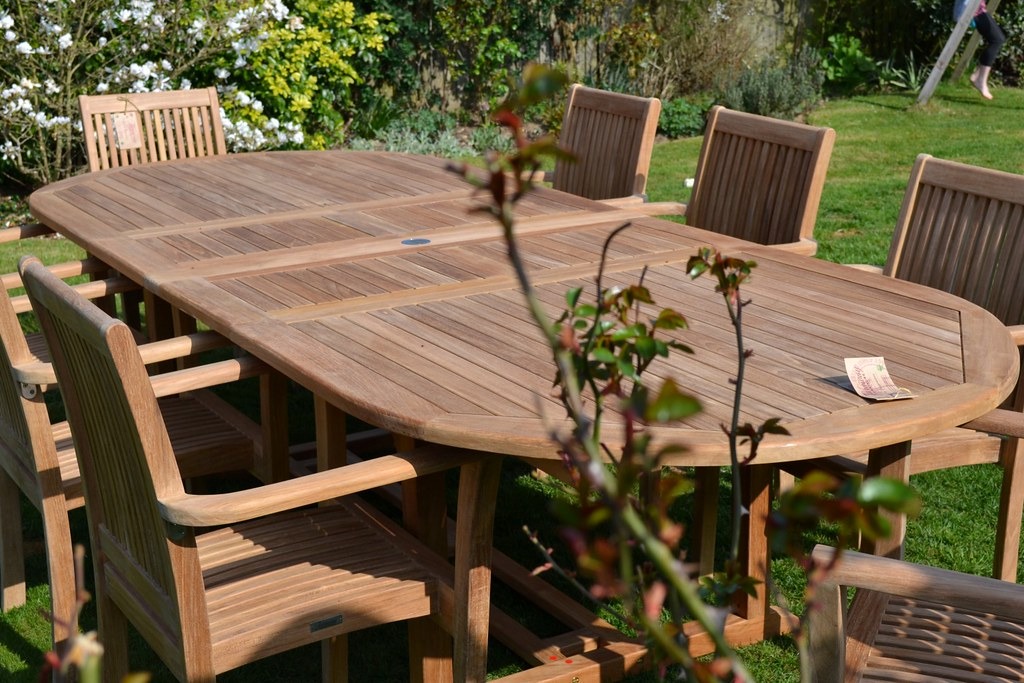Can You Restain Wood Without Sanding?
In the past, restoring wooden furniture typically required hours of sanding to remove old stain and varnish. New staining technology eliminates this time-consuming and tiring task. If you’ve been putting off refinishing your old table, corner hutch, or patio furniture, you need not wait any longer. Our team at Teak Master reveals how to restain wood without sanding, explores different techniques, and gives you some expert tips to help you rejuvenate wood surfaces quickly and easily.
Understanding the Basics of Restaining Wood
Stripping and sanding wood before staining will give you the best result, but this process takes time and requires a certain level of expertise and patience. It can also be messy and damage the wood if not done correctly. Fortunately, staining wood without sanding is possible; however, several crucial tasks must be completed first.
Assess the Finish
Before you embark on any project, you need to assess the existing wood finish. Our experts at Teak Master recommend applying a thin coat of mineral spirits to the surface. This liquid doesn’t cause any damage or discoloration. It temporarily saturates the wood, revealing the true grain and color, giving you a preview of how it will look after staining. A surface that’s smooth and evenly colored will be easier to work with than one with stains, residues, and imperfections. Applying an oil-based wipe after using mineral spirits can help you achieve a more professional result.
Clean Surfaces Thoroughly
Begin by cleaning the surfaces you intend to re-stain. Old wooden furniture typically has decades of dirt buildup that you must remove for the best results. A simple solution of dish soap and water and a sponge will do the job. At Teak Master, we recommend using a paintbrush to clean carvings and moldings that may be difficult to clean with a sponge. After cleaning your furniture, rinse the surface with clean water and dry it with a towel.
Remove Stains
White ring stains on wooden furniture are common. These occur when someone places a wet glass on the surface. These marks dull the finish and detract from the wood’s aesthetic appeal. You can fix these easily using household products.
Mix equal parts of olive oil and vinegar, and use a soft cloth to apply this mixture to the white ring. Gently rub until the stain disappears, then dry and shine the surface with a clean cloth.
Petroleum jelly also removes white rings. Apply a thin coat of this product to the stain, and let it sit overnight so the oil can penetrate. The next day, wipe off the jelly and dry and polish the surface.
Stains other than white rings might require a specialized cleaning solution. You can find commercial cleaners that remove rings and other marks at most hardware stores and furniture shops.
Replace Missing Wood
At this stage of the furniture restoration process, you need to fix chipped wood and repair damaged veneer and molding. Our Teak Master experts suggest using an epoxy putty, a widely accepted solution in the furniture industry, to fix cracks and other minor damage.
You can shape this putty the way you want it, and after it hardens, it looks the same as the original wood. Work the substance into the damaged areas and wipe away any excess. If you skipped the cleaning step, you should prepare the surface before applying putty to ensure proper adhesion.
Epoxy comes in various colors, so select the one that matches your wood. A light sanding after application may be needed to create a smooth surface.
Sand if Necessary
At this point, you must decide whether you need to sand before applying a stain. Sanding first will achieve the best results, as it helps open the wood’s pores to absorb more stain, creating a deep, vibrant color.
If your furniture appears in good condition, you don’t need to sand it first. You can use gel stains to restore your worn antique furniture to its original color without stripping and sanding. However, these products don’t remove dark spots or white rings, so the stain removal step is crucial. Gel stains provide an opaque, glossy finish and help mask scratches and imperfections in the wood that you would sand first if using a water- or oil-based stain.
Materials and Tools Needed
Restaining wood using a gel stain doesn’t require a lot of materials or tools. You’ll need a bucket, dish soap, and water for general cleaning, olive oil and vinegar for removing white stains, and specialty cleaners for more problematic discolorations.
Gather rags for cleaning and wiping, and have an epoxy and some fine sandpaper at hand if you have cracks and chips to address. You’ll also require a rag or brush to apply the gel stain.
Sealing and Protecting Your Restained Wood
Applying a sealant protects your refinished furniture. You can choose a clear coating to retain the natural color or a tinted substance to create a subtle color change. This final coat protects against future stains and scratches and helps ensure your furniture looks great for years.
Tips for Success
Even without sanding, the process requires attention to detail and patience. Don’t rush through a step due to time constraints. Put your project on hold if necessary.
Restore Your Furniture With Teak Master Today
At Teak Master, we understand the appeal of old and antique furniture. You can restore the original luster of dull or aged wooden surfaces quickly and easily with a gel stain. Contact us to discover the best restoration process for your wood products. Our friendly, knowledgeable staff will answer your questions and review your options.
Teak Garden Furniture Patio Set by shai aharony is licensed with CC BY 2.0

